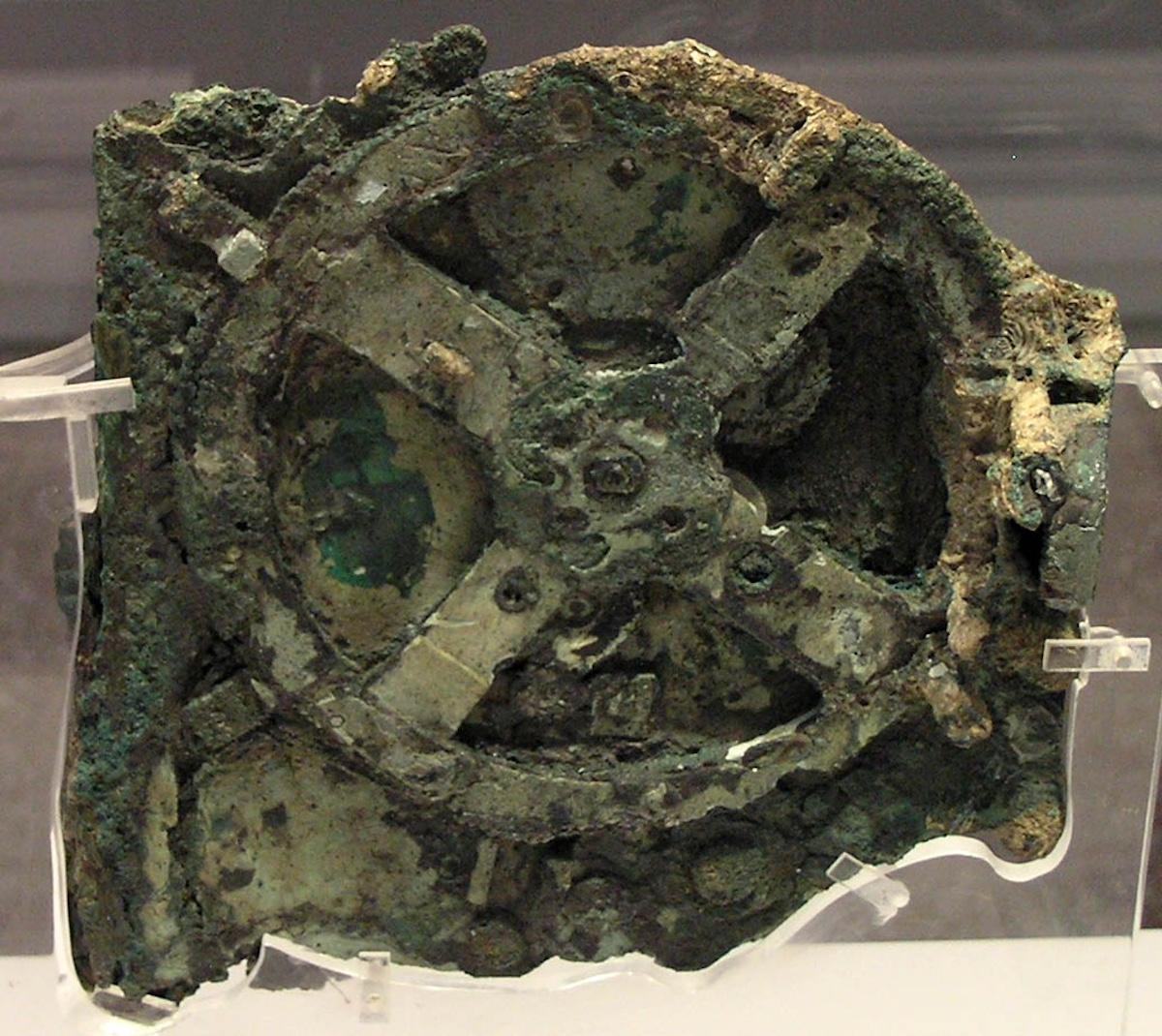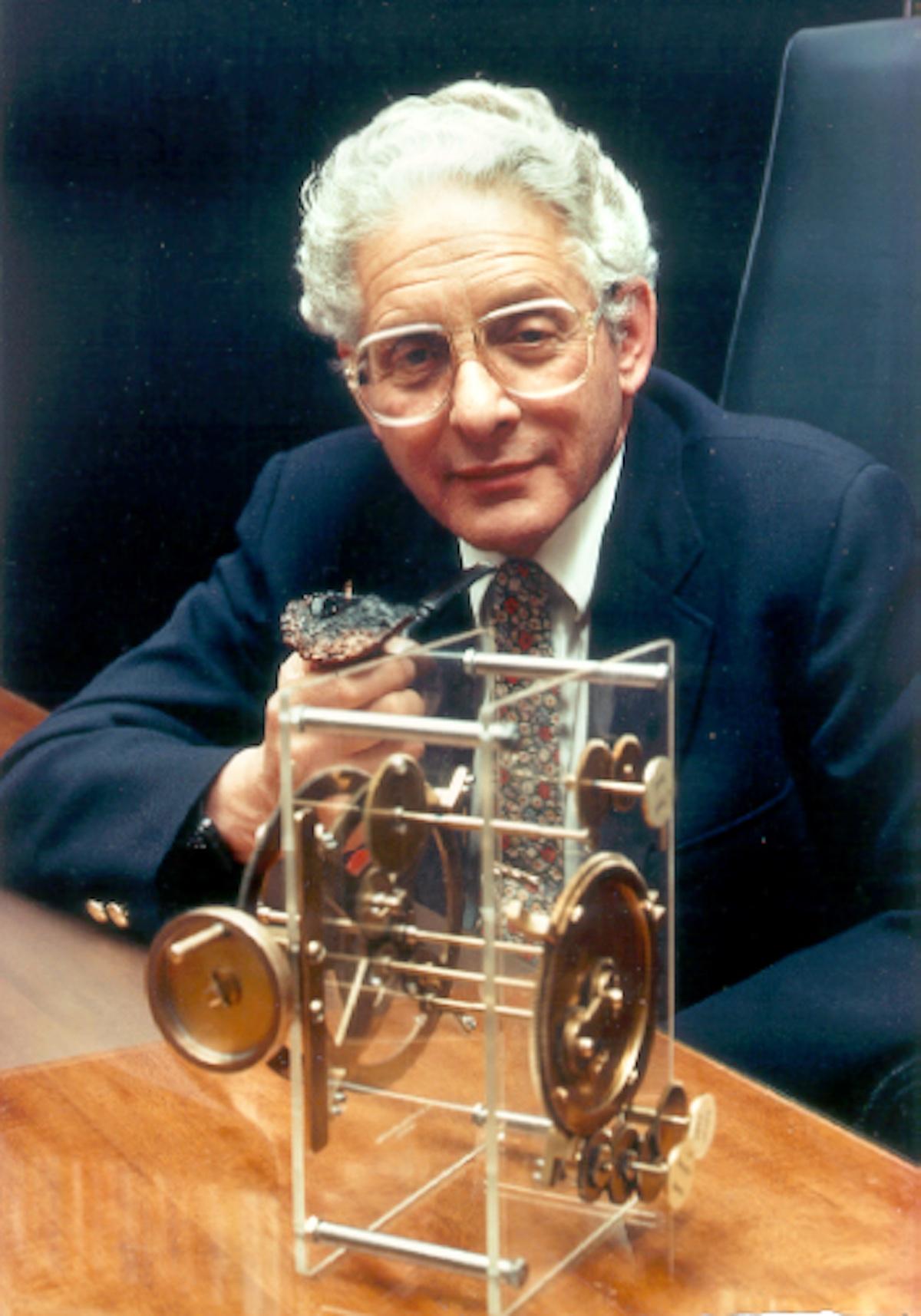When it was found, the device was encased in a corroded clump of metal. A year later, it broke apart into three main fragments and scientists discovered its interweb of gears. It is now divided into 82 fragments for conservation purposes. The device in its totality is estimated to be about the size of a mantle clock. In recent years, archaeologists have used x-rays and other imaging techniques to scan the inside fragments and attempt to reconstruct its original structure to better understand its usage and purpose.

Promotional poster for Indiana Jones and the Dial of Destiny (detail)
This year’s Indiana Jones and the Dial of Destiny finds Harrison Ford in his final adventure as the legendary archaeologist, Indiana Jones. In the film, Jones and his goddaughter race to find the missing half of Archimedes’ Dial, a device that enables time travel, before a Nazi scientist can use the dial to change the outcome of WW2. A crazy plot indeed, and don’t worry, we won’t spoil the ending, but what about that Antikythera mechanism, the Archimedes’ Dial: is it real?
In short—sort of. As stated in the film, the dial was discovered in a shipwreck by Greek sponge divers in 1901. This extraordinary device is an Ancient Greek orrery and was most likely crafted during the 1st or 2nd century BCE. Though the movie attributes the technology to the Greek mathematician Archimedes, this too, has yet to be proven. Theorists from the Antikythera Mechanism Research Project, do suggest, however, that the concept for the device originated in the colonies of Corinth, which was the home of Archimedes.

Antikythera mechanism (main fragment), ca. 125 BC

Derek deSolla Price (1922–1983) with a model of the Antikythera mechanism
The Antikythera mechanism is a mechanical model of the Solar System that illustrates the moon's and planets' positions. It’s been described by many as the first analog computer because of its intricate assembly of gears and dials. Its purpose was to decipher and forecast astronomical events. The movie explains that the Dial of Destiny can locate time portals through pre-programmed astronomical calculations. While the device has yet to really help humans time travel through its astronomical findings, it has served as an artifact of ingenuity that has, since its discovery, left historians and archaeologists in awe.
At its core, the mechanism operated as a complex celestial calculator, allowing ancient astronomers to track the movements of astronomical bodies in order to predict eclipses, provide precise information regarding the timing and dates of astronomical phenomena, and even track the four-year cycle of the Olympic games. In essence, the Antikythera mechanism functioned as an astronomical clock, enabling its users to navigate the celestial realm with a level of sophistication that was likely unmatched in the ancient world.
The face of the mechanism has a fixed ring dial with two rings. One ring contains symbols for each of the twelve zodiac signs. The other ring has notches for the days and months of the Sothic Egyptian calendar. The mechanism was used via a small crank that would be turned by hand. It was connected to gears that would cause the interlocking gears to rotate each day, just like a clock.
In addition, the device also tracked the precession of the elliptical orbit of the sun and moon in an 8.88 year cycle. The back of the mechanism contained five dials that measured other units of time and space.

Promotional poster for Indiana Jones and the Dial of Destiny
The complexity and precision of this mechanism continues to astound researchers today but has also left them grappling with unanswered questions, the biggest of which: How did the ancient Greeks develop such advanced mechanical knowledge? The mechanism represents a profound leap in human understanding, a testament to the timeless human pursuit of knowledge and the ceaseless curiosity that drives us forward. For those interested in learning more about the dial, however, a visit to the National Archaeological Museum in Athens would be more appropriate than to your local movie theater.




























